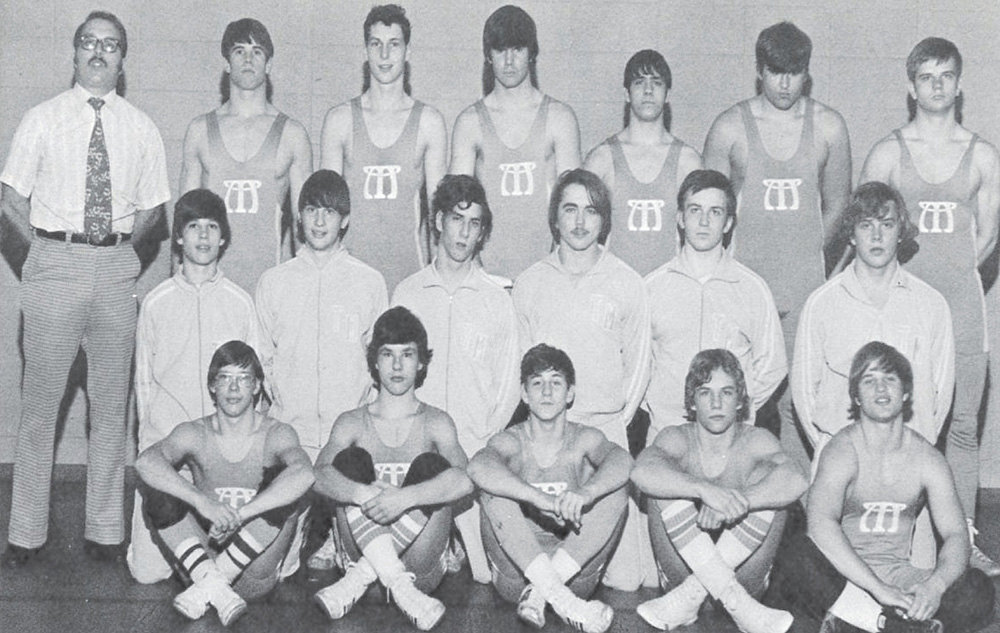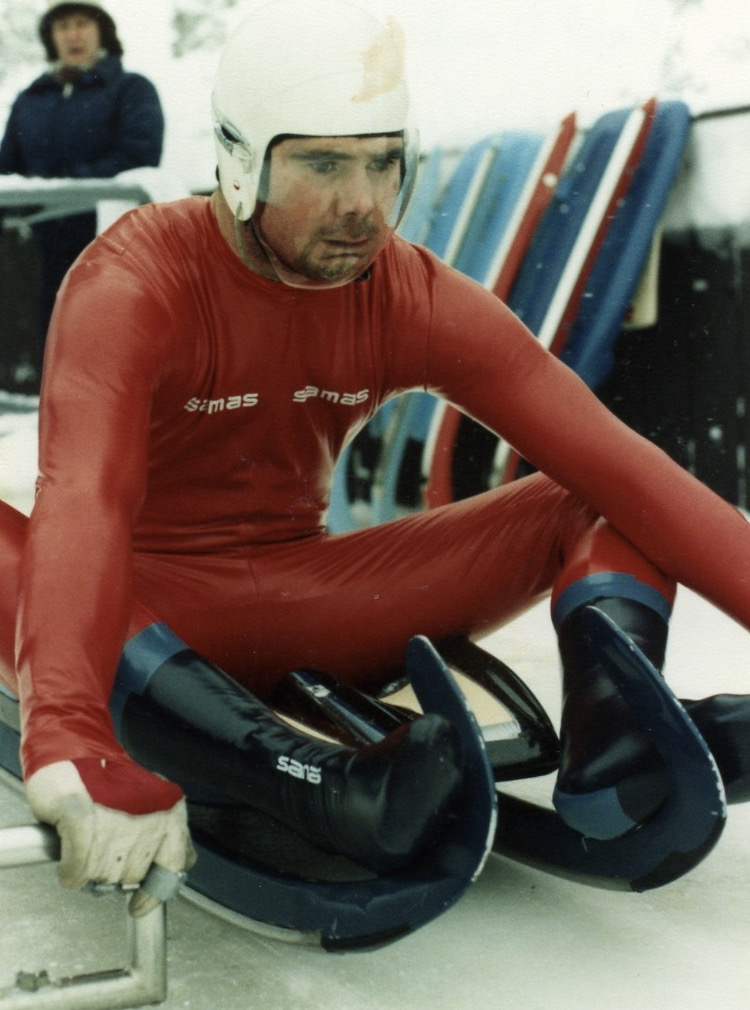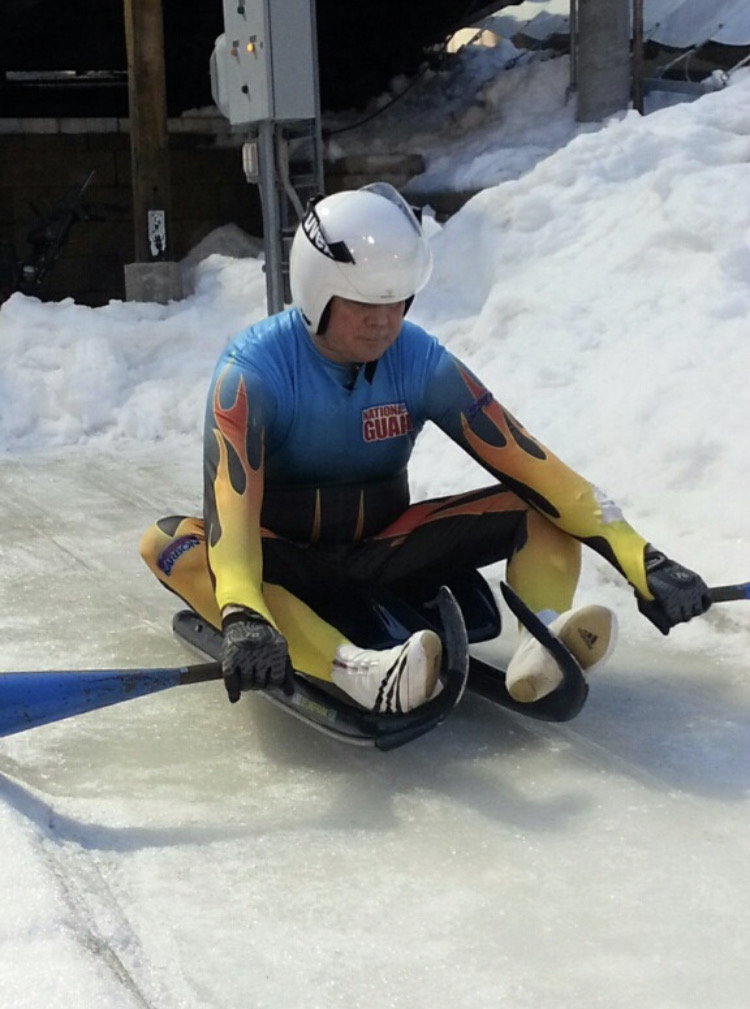By Katlyn Putney, St. Thomas More High School
“Hey. I want to try that luge thing.”
Growing up in the Milwaukee area, Paul Dondero was no stranger to close-knit communities and water in both its liquid and frozen forms.
As an avid sailor, Dondero loved the objectivity of individual sports and was drawn to luge the first time he saw it during the 1972 Olympic games. “I thought it was so cool. It was one guy. Just get down the hill and beat the clock. None of this ‘It was prettier’ nonsense of the judged events. It was as cruel and objective as can be.”

Knowing that individual sports were in his wheelhouse, Dondero worked hard to be a part of the track and field and wrestling programs at St. Thomas More High School, located on Milwaukee’s southeast side. “Back then, no one knew how to pole vault,” he explained. “They gave us a six-sequence photograph of a guy pole vaulting and my teammates and I had to figure it out. We taught each other how to do it.”
During his sophomore year, Dondero tried out for the wrestling team. “Wrestling was too physical for me when I was a freshman, but I started working out with the wrestlers and made connections with those guys and I went for it again my sophomore year.”
As a wrestler, Dondero learned from one of St. Thomas More’s most well-known figures: former president and principal Tom Knitter. “Knitter had a line, ‘What your mind can believe, your body can achieve,’ and that really stuck with me. I liked individual sports; I wanted to perform, and I wanted to be accountable only to me. Did we all work hard as a team to make each other better? Of course. But when it came time to compete, it was all me.”
Like many St. Thomas More wrestlers, Dondero believes that Knitter’s influence played a significant role in his life. “I was a pretty wild kid in high school. When you’re six of eight kids, you kind of get lost in the shuffle. Mr. Knitter gave me lots of attention—positive attention—and when I screwed up, he forgave me. His forgiveness changed my life.”

After graduating from St. Thomas More in 1975, Dondero remained in Milwaukee and began working at North Sails, one of the companies outfitting the world’s best sailors for the 1980 Summer Olympics. “Four years out and these Olympic-hopeful sailors were already ramped up. They would help build their boats, and we would make the sails for them. I loved the competitive energy surrounding me, but I didn’t know how to get in on that action.”
Through connections made at North Sails, Dondero ended up spectating at the speed skating world championships at State Fair Park in 1979. “I was sitting there with Olympic hopefuls from all over the country, and I asked them what brought them to Milwaukee of all places. They said that this was the place to skate,” Dondero said. “So, then I said to them, ‘Hey, I want to try that luge thing,’ and they immediately told me to go to Lake Placid in upstate New York.”
A few months later in February 1980, Dondero and a friend saw the Olympic luge events on while they were at a bar. That night, they decided they would make the trip to Lake Placid.
“So, I got on the phone and started calling around, and I found out that there was going to be a grassroots program a week after the Olympics. We just had to show up in Lake Placid on a certain date. My buddy and I got speed suits from our skating friends and got a cheap hotel. We walked on Main Street in Lake Placid, which, with only one traffic light, is smaller than downtown Bay View. We walked up and down the street asking people about luge and got referred to the Woodshed Restaurant. When we asked the bartender about the grassroots program, he said I could sign up right there. He opened a briefcase, set it on the bar, and had me fill out a form. It cost $6 to register.”
Dondero’s first weekend in Lake Placid—and the years that followed—proved that luge, much like the community he experienced at St. Thomas More and on Milwaukee’s south side, was tight-knit and full of people dedicated to their passion.
“That first day, the coach of the Olympic team and four team members taught me the ropes. Three days after I got there, I was racing from the women’s Olympic starting line, 750 meters up the track, making eight turns, and going about 40-50 miles an hour—just in that first weekend!”
With the 1980 Winter Olympic hangover still lingering in the town, Dondero was able to make connections with the athletes and community members and joined the Adirondack Luge Club. Through the organization’s classifieds, he purchased a sled and connected with a club member in Rockford, Illinois who had a wooden start ramp where he could practice his new sport.

The next winter, Dondero went back to Lake Placid with his brother and stayed for three months. “We spent the winter sliding and got into some seeding races. I finished seventh and that motivated me to keep working hard. I was not a great luge racer, but I was determined. I knew I could work harder than the next guy.”
During Dondero’s career in luge, mentors and competitors became friends. “I had one of the best friends you could ever have in a man named Frank Masley.” Highly respected by his peers, Masley, who also competed in the 1980 Winter Olympics in Lake Placid, would be selected by his fellow Olympians to carry the US flag during the Opening Ceremonies for the 1984 Winter Olympics in Sarajevo, Yugoslavia (now part of Bosnia and Herzegovina). After Masley crashed in one of his qualifying races, however, he and Dondero were left to compete for the final spot of the 1984 team.
“It came down to either Frank or me making the team and getting to race in Sarajevo. We polished each other’s steels; we spent hours and hours prepping our sleds. And it never occurred to us that one of us was not going to make the Olympic team. In the end, Frank beat me by .004 of a second. Frank felt bad and so did I, but we never gave it a thought. The best gift I ever got out of the sport was Frank’s friendship.”
Dondero was still able to attend the 1984 Sarajevo Winter Olympic Games as an alternate for the USA Luge Team. “The coaches knew I prepped the sleds for Frank, and that Frank was the fastest guy in the US. I had no problem doing that for the other guys. I was a team player! I did the best I could for everyone.” And, as a member of the US Marine Reserves, Dondero had the opportunity that few of his fellow Marines did—to see what life was like behind the Soviet Union’s Iron Curtain.
“I was a Reserve Marine from 1979 to 1985. My coach would write a letter about my luge ranking and would ask the reserve center if I could travel. Being an American Marine and traveling into countries controlled by the Soviet Union was unprecedented.”
In his life after the Olympics, Dondero went back to school to become a nurse, bought a house, and started his family. “Living in the St. Thomas More neighborhood my whole life, I walked past this very house every day on my way to school. When we moved in here, I could hear Joe Zolecki yelling at his baseball players from my front porch!”

Dondero’s two sons, John and Tim, graduated from St. Thomas More in 2010 and 2011. “That’s what also impressed me about St. Thomas More—these coaches and teachers stayed around. The staff retention and why they are there—it’s about the connections they make. When we went to our first orientation night as St. Thomas More parents, the teachers told us that they would keep an eye on the kids and always be open for communication, and we loved that.”
“Living so close was a blessing. My favorite thing was when the kids or whole soccer team would come over here and eat my dinner, sit on my couch, and become part of the family,” he remembered fondly. “They were neighborhood kids who went to the neighborhood school. The best medicine for our kids and their friends was just having each other around.”
Dondero now works at St. Luke’s Hospital in a pulmonary rehabilitation unit. “I still race once in a while. I took second place at the Norton Masters Senior Division in 2018. I had never raced in Salt Lake City or seen the track, so I watched a few videos to prepare. I honestly was winging it; I didn’t know if we were turning left or right but whatever,” he laughed. “I got a little banged up—my face shield fogged up, and I hit a wall going 70 miles per hour. I found out months later that I had broken my foot!”
Reflecting on his unique life experiences, Dondero believes that his time at St. Thomas More, especially while wrestling for Coach Knitter, played a pivotal role in his life. “Was it special? Yes. Was it weird? Absolutely. I wouldn’t have been able to enjoy those experiences without Mr. Knitter. I can’t give him props enough for helping make me who I am today. Everybody has people in their life that help them along. And the first person for me was Mr. Knitter.”
About the Author
Katlyn Putney (STM ’10) has been the Marketing and Volunteer Coordinator at St. Thomas More High School since fall 2015. She also coaches girls’ JV basketball and girls’ JV soccer.







